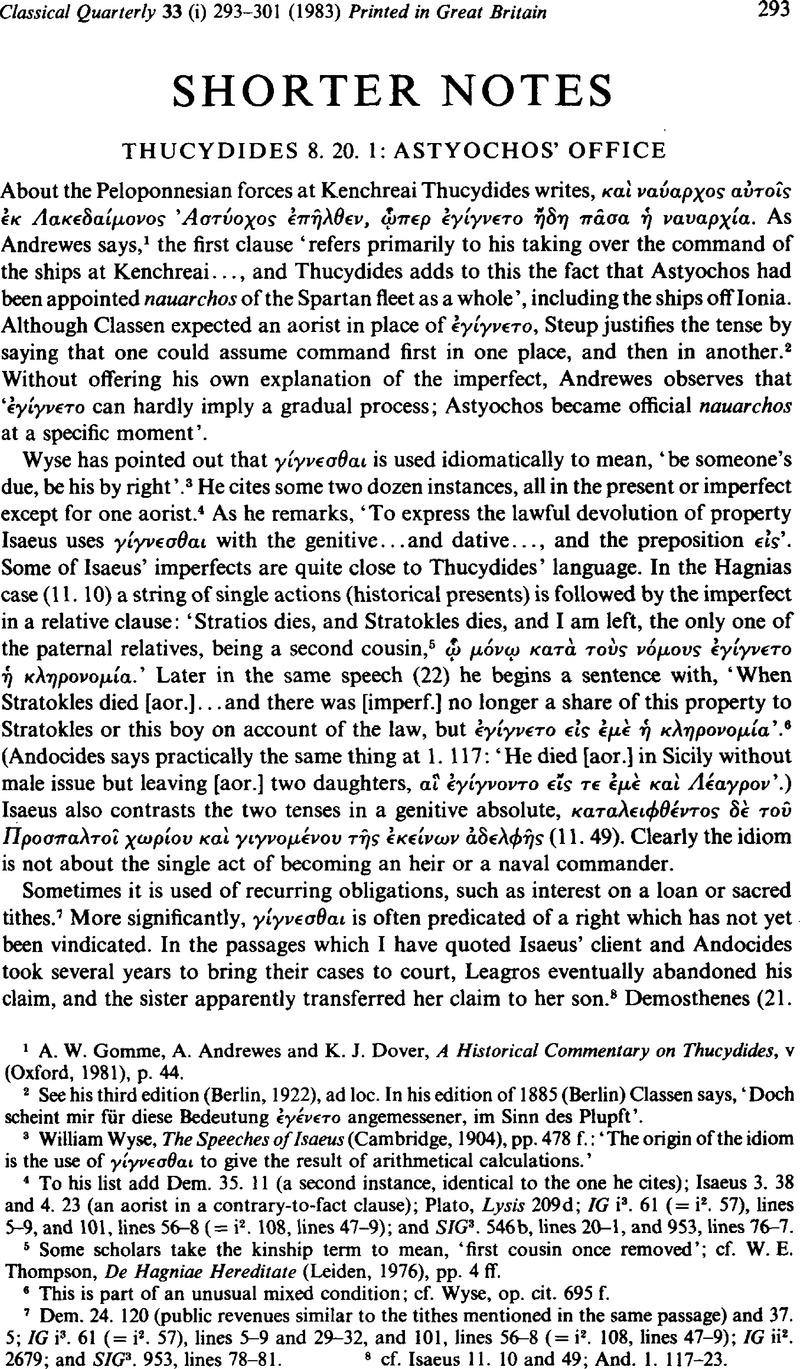No CrossRef data available.
Article contents
Thucydides 8. 20. 1: Astyochos' Office
Published online by Cambridge University Press: 11 February 2009
Abstract

- Type
- Shorter Notes
- Information
- Copyright
- Copyright © The Classical Association 1983
References
1 Gomme, A. W., Andrewes, A. and Dover, K. J., A Historical Commentary on Thucydides, v (Oxford, 1981), p. 44Google Scholar.
2 See his third edition (Berlin, 1922), ad loc. In his edition of 1885 (Berlin) Classen says, ‘Doch scheint mir für diese Bedeutung ⋯γένετο angemessener, im Sinn des Plupft’.
3 Wyse, William, The Speeches of Isaeus (Cambridge, 1904), pp. 478 fGoogle Scholar.: “The origin of the idiom is the use of γίγνεσθαι to give the result of arithmetical calculations.’
4 To his list add Dem. 35. 11 (a second instance, identical to the one he cites); Isaeus 3. 38 and 4. 23 (an aorist in a contrary-to-fact clause); Plato, Lysis 209d;IG i3. 61 (= i2. 57), lines 5–9, and 101, lines 56–8 (= i2. 108, lines 47–9); and SIG 3. 546b, lines 20–1, and 953, lines 76–7.
5 Some scholars take the kinship term to mean, ‘first cousin once removed’; cf. Thompson, W. E., De Hagniae Hereditate (Leiden, 1976), pp. 4 ffGoogle Scholar.
6 This is part of an unusual mixed condition; cf. Wyse, op. cit. 695 f.
7 Dem. 24. 120 (public revenues similar to the tithes mentioned in the same passage) and 37. 5; IG i3. 61 (= i2. 57), lines 5–9 and 29–32, and 101, lines 56–8 (= i2. 108, lines 47–9); IG ii2. 2679; and SIG 3. 953, lines 78–81.
8 cf. Isaeus 11. 10 and 49; And. 1. 117–23.
9 IG i3. 102 (= i2. 110), lines 22–5. Other examples are Dem. 38. 7 and 43. 71 (a law), and Isoc. 6. 18.


